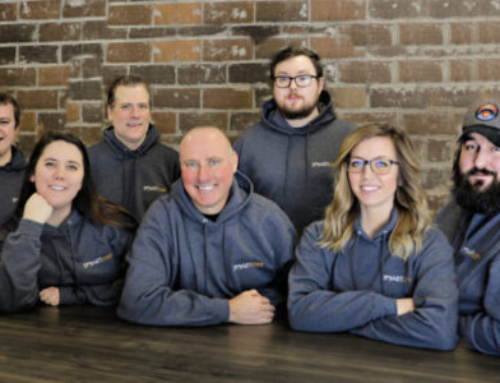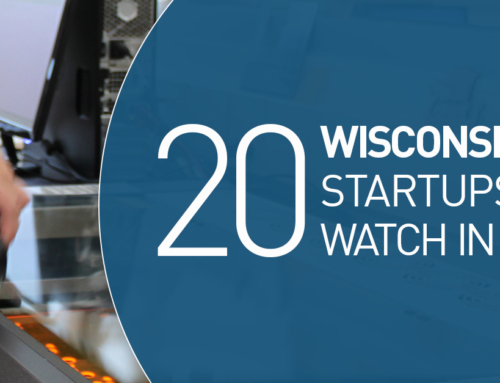Tim Shedd, CEO and CTO of Ebullient
With computers’ growing performance capabilities, big data centers often face the challenge of keeping their machines from overheating while computing. We recently spoke with Tim Shedd, CEO and CTO of Ebullient Precision Cooling Systems, who illuminated some of the key issues associated with keeping computers cool, and outlined his company’s solution for the problem.
Q: Can you share a little bit about your background, what did you do before starting Ebullient?
A: Prior to founding Ebullient, I was a professor of mechanical engineering at the University of Wisconsin-Madison, where I led a team of researchers in the areas of two-phase flow and phase-change heat transfer.
Q: How does Ebullient work?
A: High-performance computers handle a host of different requests simultaneously, requiring a massive amount of computing power provided by a staggering number of servers. Each of these servers generates heat, and to cool these servers, most data centers use large and inefficient air conditioners.
Ebullient DirectJet TM precision cooling systems pump a safe, non-conductive liquid to proprietary modules that mount on top of hot chips in a computer to capture the heat right where it is generated and then carry the heat to a central location where it is removed from the building or reused to heat water or a nearby office space. We use a unique process that allows the liquid to boil at a low temperature as it flows through our proprietary modules mounted on hot chips. This allows Ebullient to cool these chips very efficiently and safely.
Q: What do you hope to see Ebullient accomplish?
A: Fundamentally, I want Ebullient DirectJet TM precision cooling systems to significantly reduce the amount of energy and water used to cool computers around the world. But equally as important, I want to help people grow their businesses and operations using the latest technology without having to spend a fortune building a new room or even a whole new building to house the computers that power such growth. These businesses may be a local dentist’s office with digital x-ray and imaging machines, or a college managing its student records, or a bank, or a hospital, or a mega-scale data center serving up the latest social media.
Q: Where did the idea behind Ebullient come from?
A: My professional career began at Digital Equipment Corporation, where I learned the importance of computer cooling through witnessing firsthand how heat can slow CPU performance. Later, I became a professor of mechanical engineering at UW-Madison and engaged with Wisconsin companies that had electronics cooling needs. After the 2007 Department of Energy findings that nearly 1 percent of the electricity consumed in the U.S. is for data center cooling, I began to study the problem and to seek practical ways to apply the theory and fundamental knowledge we were gaining in the laboratory to this problem. Ebullient was born out of a desire to apply my knowledge of heat transfer, boiling and condensation to cooling today’s servers effectively, efficiently and inexpensively.
Q: In your opinion, why is Ebullient’s business model successful in the marketplace?
A: The demand for high-powered computing is growing unabated. Despite the fact that most people interact more and more with compact devices such as phones, tablets and laptops that don’t seem to be too power-hungry, the servers that run behind the scenes to enable you to watch movies, get your bank statements and check your health records are having to do more and more with each consumer device sold. In addition, there is growing demand for high-powered computers to perform weather modeling, complex financial transactions, etc. Processor powers are projected to more than double for many of these server computers in the next few years, while computer owners want to locate more and more of these computers in smaller and smaller spaces. The computing needs of the future are immense. This trend is driving interest and demand for liquid cooling of computers, and Ebullient provides the only commercially available option for direct-to-chip cooling using a liquid other than water, which can damage computers instantly if it leaks. We are seeing interest from data center owners and computer makers alike.
Q: Who are your primary clients?
A: Our products can address pain points for a variety of clients. For example, we can help a hospital with a growing need to store confidential records on site that lacks a purpose-built facility for a large-scale computer operation. Other target clients are data center operators with a “hot spot” where the air conditioning just can’t provide enough cool air to keep the computers from overheating. Still others are owners of high-performance computers for research and visualization who are using computers that can generate more than 2,000 W of heat in a single computer. As more and more people get to know Ebullient and our products, we anticipate being designed into data centers, virtual reality, vehicle electronics or telecommunications, providing significant savings from day one.
Q: What are some resources that have contributed to Ebullient’s success?
A: A significant number of our investors are Wisconsin residents and were quite clear in their interest in the Qualified New Business Venture (QNBV) tax credits. I believe that our QNBV status probably made the difference for us hitting our fundraising goals. The Wisconsin Economic Development Corporation (WEDC) has been a great asset to Ebullient, both in the form of the QNBV tax credit program and in providing support through the Technology Development Loan (TDL) Program. While the application process was very rigorous and thorough, I’m happy to have our plans vetted by WEDC and to get feedback on them. These programs have definitely helped enable the level of growth we have achieved so far.
Q: What has been the biggest challenge for you and your team? What advice do you have for other entrepreneurs facing similar challenges?
A: Taking a new concept to market is challenging, especially for an academic. It is important to seek input from experienced entrepreneurs and business leaders early and often, even if it seems they don’t have a clue what you do. Don’t take criticism personally, but use it to better match your product to the market and learn how to be a more successful businessperson. And network until you can’t stay up on your feet any longer and your voice is gone. You’ll need that network for so many things, and so many things that you won’t realize until two years in, five years in, etc.









FOLLOW US